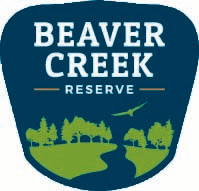By: Claire Anderson, University of Wisconsin-Eau Claire Writing Intern
 |
| Banded and recaptured Saw-whet Owl, identified as an After Hatch-year |
Next, we headed out to Hobbs Observatory to look at the stars and different planets with members from CVAS, Lauren Likkel and Mike Brown. My group started inside the observatory's dome to get a better look at the moon, which we saw in greater detail than what can be seen with the naked eye. Then we went outside and looked through another telescope and saw Saturn, a planetary nebula, a star cluster called M13, and the Andromeda Galaxy called M31. When viewing Saturn at high levels of magnification, I was able to distinguish the rings and some of the moons. The other group saw Jupiter and a few other star clusters. Following looking at the different astronomical features, we went back inside to watch a presentation about stars. CVAS members described the way stars move through the night, and through the year. I found the Andromeda Galaxy especially fascinating! This galaxy is 25 million light years away, which means that what we are looking at now is the same way it was 25 million years ago. It’s appearance is compared to a stretched out cotton ball. Thinking about how far away these entities are and how vast our universe is, is astonishing.
 |
| Saw-whet Owl identified as a Second year, being aged using a UV light |
In order to attract the owls, the banders play a recording of the spring mating call of a male Northern Saw-whet Owl. This lures owls to the mist nets set up by the bird banders, and they are checked every half hour. Sometimes, the nets capture non-targeted species. For example, the banders have captured an American Woodcock and a Barred Owl in the past.
The bird banders showed us the process of measuring and weighing the birds, as well as determining the age and sex. The bird banders use a chart that determines the sex based on the size of the owl and the length of their wings. To identify the age of the bird they use a UV light. When the wings are under the UV light, a chemical called "porphyrin" appears as different shades of pink. New feathers will show up as a darker pink, older feathers will be lighter shades of pink, and some with no visible coloring at all.
If you’re interested in watching the owl banding process, keep an eye on our events calendar for more opportunities. If you’re interested in going to a public telescope observing program, see CVAS’ website for more information about upcoming events.

.png)
No comments:
Post a Comment